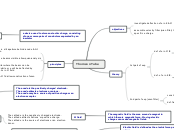Thomson Tube
objectives
investigate deflection of e in E & M
assemble velocity filter (wien filter) to determine specific e charge
theory
1st part of exp
def of e in M fd
e will moves on circular track in m fd of HHoltz pair of coils
if value x & y r read off ,specific charge can be determined
def. of e in E fd.
e moves on parabola shaped curve
e release from cathode,->acceleratd by anode voltage Ua & pass E fd of a plate cap w voltge Up.the distance between the plate is d.formula related:
E field exp is smaller than theory
2nd part of exp (wien filter)
const. using crossed E &M fd
def. from E & M just cancel each other
principles
In the T.tube,e pass a slit aperture behind anode & hit the luminous screen
e beams visible allow quan.analysis
there's plate capacitor where the beam can be deflected by E field while or e will be deflected by helmholtz pair of coils in M field
superposition of E & M fd allow construction of wien filter
anode
The anode is the positively charged electrode.
The anode attracts electrons or anions.
The anode may be a source of positive charge or an electron acceptor
cathode
The cathode is the negatively charged electrode.
The cathode attracts cations or positive charge.
The cathode is the source of electrons or an electron donor.
